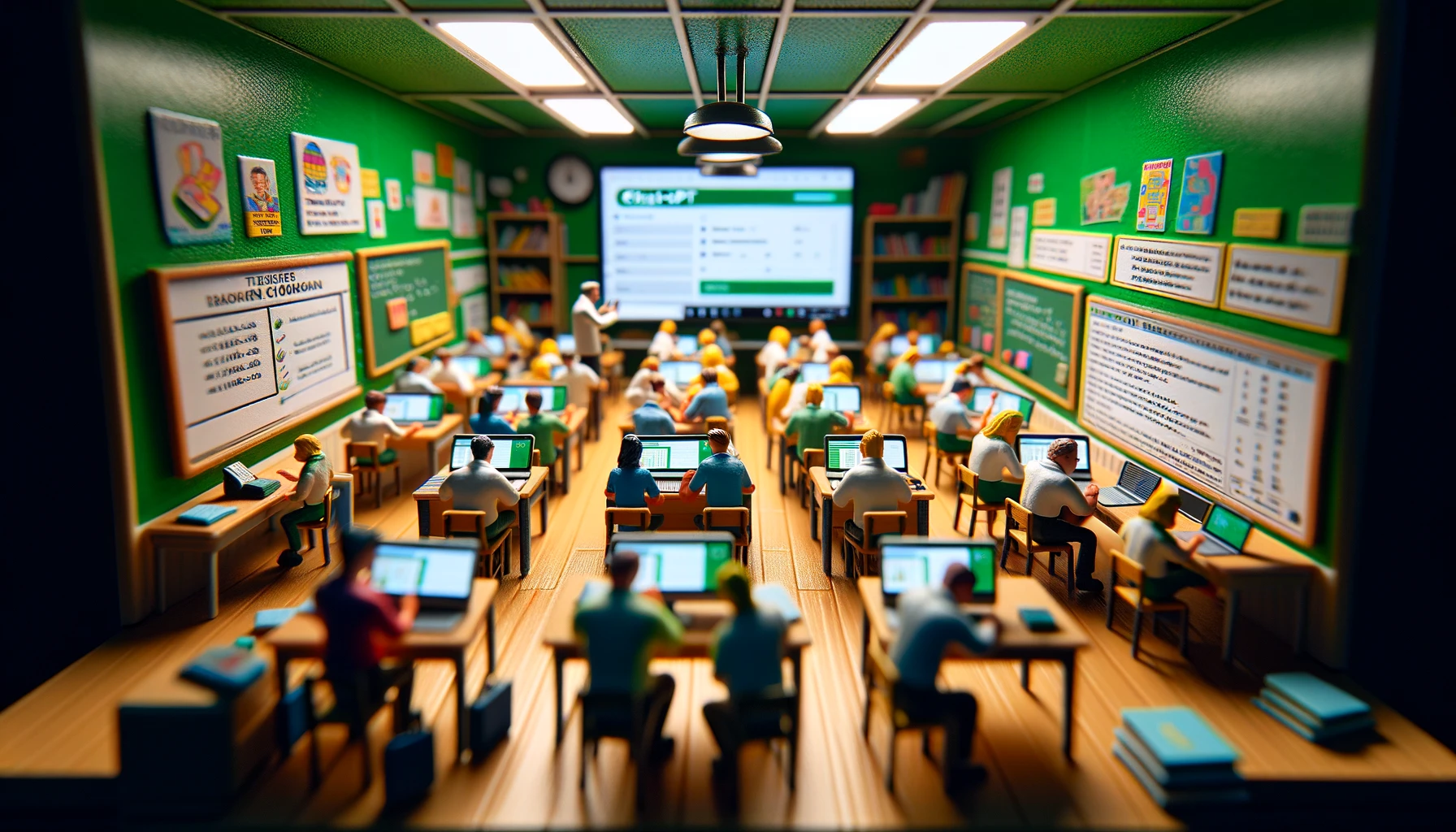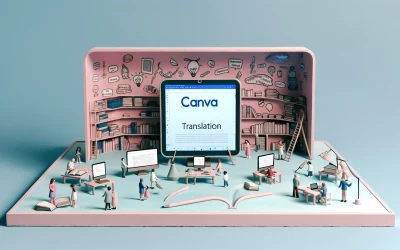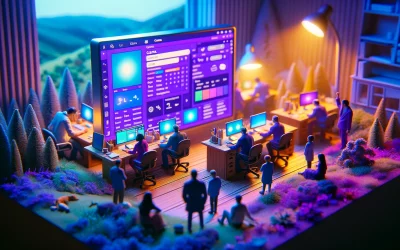Teachers are always on the lookout for new and innovative ways to engage their students and make learning fun. One such tool that has gained popularity in recent times is ChatGPT. ChatGPT is an AI language model developed by OpenAI that generates human-like text based on the prompts it receives. It has become a game-changing tool for teachers who are looking for ways to save time while planning and teaching.
With ChatGPT, teachers can create innovative learning experiences that are tailored to their students’ needs. From icebreakers and team-building activities to classroom management strategies and assessment opportunities, ChatGPT prompts for teachers can help teachers navigate through lessons, personalities, and the occasional storm of distractions. With over 50 ChatGPT prompts available, teachers can choose the best ones that suit their needs and preferences.
In this article, we will explore some of the best ChatGPT prompts for teachers that can help them save time, engage their students, and create innovative learning experiences. Whether you are a new teacher looking for ways to manage your classroom or an experienced teacher looking for new ideas, these ChatGPT prompts will surely come in handy.
Engaging with ChatGPT in the Classroom
ChatGPT is a powerful tool for teachers to engage with their students in the classroom. Here are a few ways teachers can use ChatGPT to make their lessons more interactive and engaging.
Interactive Lesson Plans
With ChatGPT, teachers can create interactive lesson plans that allow students to engage with the material in a more meaningful way. For example, teachers can create a chatbot that guides students through a lesson, asking questions and providing feedback along the way. This can help students stay engaged and focused, as well as provide valuable feedback to the teacher about what areas of the lesson may need more attention.
Real-Time Q&A Sessions
ChatGPT can also be used to facilitate real-time Q&A sessions with students. This can be especially useful for larger classes, where it may be difficult for the teacher to answer every student’s question in a timely manner. By using ChatGPT to facilitate these sessions, teachers can ensure that every student’s question is answered, and that the answers are accurate and helpful.
Incorporating ChatGPT into Curriculum Design
ChatGPT is a powerful tool that can be used to enhance the learning experience for students of all ages. By integrating ChatGPT into curriculum design, teachers can create more personalized and effective learning experiences for their students.
Customizing Content for Different Subjects
One of the most significant benefits of using ChatGPT in curriculum design is the ability to customize content for different subjects. With ChatGPT, teachers can create personalized prompts that are tailored to the specific needs of their students. For example, a science teacher could use ChatGPT to generate prompts that focus on specific topics, such as the human body or the solar system. By doing so, students can gain a deeper understanding of the subject matter and develop a stronger foundation of knowledge.
Adapting to Various Learning Styles
Another benefit of using ChatGPT in curriculum design is the ability to adapt to various learning styles. ChatGPT can generate prompts that are designed to cater to different learning styles, such as visual, auditory, and kinesthetic. For example, a teacher could use ChatGPT to generate prompts that include videos, images, or interactive exercises. By doing so, students can engage with the material in a way that is most effective for them.
Examples of ChatGPT Prompts for Teachers
Here are some prompt ideas, tailored for different subjects, to inspire creativity and critical thinking in students:
1. Creative Writing: Crafting a Story Based on Historical Events
“Imagine you’re a character living during a significant historical event. Write a first-person narrative describing your daily life, challenges, and feelings about the events unfolding around you. Consider the political, social, and economic conditions of the time. How do these events affect your character’s life and decisions? Your story should incorporate factual historical details to enrich the narrative.”
2. Science: Exploring the Impact of Climate Change on Habitats
“Write an essay from the perspective of an animal affected by climate change. Discuss how changing climates impact your habitat, food sources, and overall survival. Include scientific explanations for the climate changes affecting your species, and propose solutions or adaptations that could mitigate these impacts.”
3. Mathematics: The Adventure of a Number
“Personify a number of your choice (for example, 7). Write a story about its adventures as it goes through various mathematical operations. Describe its feelings when being added, subtracted, multiplied, or divided. Include encounters with other numbers and how these interactions change its value. The story should creatively explain mathematical concepts and operations.”
4. Social Studies: Diplomacy and International Relations Simulation
“Assume the role of a diplomat from a country of your choice. Draft a proposal addressing a current international conflict or issue, considering your country’s position, interests, and the perspectives of other nations involved. Use diplomatic language and include a plan for negotiation, conflict resolution, and building long-term partnerships.”
5. Art: Analyzing Art Through the Ages
“Select an art movement (e.g., Renaissance, Impressionism, Cubism) and describe its characteristics, significant artists, and influential works. Then, create a piece of writing that imagines a dialogue between two artists from different movements discussing their perspectives on art, techniques, and the role of art in society.”
6. Technology and Coding: Designing a Futuristic App
“Imagine you’re a software developer tasked with designing an app for the future. Describe the app’s purpose, its target audience, and how it incorporates advanced technology (like AI, VR, or blockchain). Outline the app’s features, user interface design, and how it addresses a particular problem or need in society.”
7. Health and Physical Education: A Journal from the Future Self
“Write a letter from your future self, 20 years from now, describing how maintaining a healthy lifestyle impacted your life. Include the benefits of regular exercise, a balanced diet, mental health practices, and how these habits helped overcome challenges.”
8. Geography: City Planning from Scratch
“Imagine you’re a city planner tasked with designing a new city from the ground up in a location of your choice. Consider geographical features, climate, resources, and the needs of a future population. Describe your city’s layout, infrastructure, transportation systems, and how it addresses environmental sustainability. What makes your city unique and a great place to live?”
9. Physics: A Day in Zero Gravity
“Write a diary entry about spending a day in a space station experiencing zero gravity. Describe the scientific principles of zero gravity and how it affects daily activities such as eating, moving around, and sleeping. Discuss the innovations and technologies that make life possible in space, referencing real astronaut experiences.”
10. Economics: The Journey of a Product
“Trace the journey of a common product (e.g., a smartphone or a coffee bean) from its origins to the consumer. Discuss the economic concepts of supply and demand, production, distribution, and the impact of globalization on its journey. Conclude with an analysis of the product’s economic footprint and its implications on local and global economies.”
11. Environmental Science: Debate on Renewable Energy Solutions
“Prepare arguments for a debate on the viability of different renewable energy sources (solar, wind, hydro, and geothermal). Analyze the advantages and limitations of each energy source, considering factors such as environmental impact, cost, efficiency, and scalability. Support your arguments with scientific data and case studies.”
12. History: Letters from a Historical Figure
“Choose a historical figure and write a series of letters they might have sent to another figure of their time regarding a major event or development. These letters should reflect the historical context, the figures’ personalities, and their perspectives on the event. Use historical evidence to support the content of the letters.”
13. Biology: The Secret Life of Plants
“Create a documentary script exploring the life of a plant from seed to maturity. Include sections on photosynthesis, respiration, nutrient uptake, and the plant’s role in its ecosystem. Highlight the adaptations that allow it to thrive in its environment and its interactions with pollinators and other species.”
14. World Languages: A Travel Vlog Script
“Write a script for a travel vlog in a language you are learning, exploring a city where that language is spoken. Include descriptions of places visited, cultural experiences, and conversations with locals. The script should showcase your language skills and provide insights into the culture and traditions of the area.”
15. Music: Composing a Soundtrack for a Historical Event
“Compose a piece of music or write a detailed plan for a soundtrack that captures the emotions and significance of a historical event. Describe the instruments used, the tempo, and how different movements or sections of the piece reflect aspects of the event. Explain the historical research behind your composition choices.”
16. Drama: Staging a Scene from a Classic Novel
“Select a scene from a classic novel and adapt it into a short play. Write the script, including stage directions, character dialogues, and descriptions of the setting. Discuss how you would direct the scene to convey the themes and emotions of the original work, considering costume, lighting, and staging.”
17. Philosophy: Debating Ethical Dilemmas in Technology
“Choose a current technology (e.g., AI, facial recognition, social media algorithms) and write a dialogue between two characters with opposing views on its ethical implications. Address issues such as privacy, surveillance, bias, and the impact on society. Conclude with your perspective on how these dilemmas could be navigated.”




